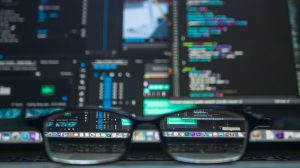While we reimagine Aotearoa’s next chapter, it’s key to consider the tools we’ll be using to carve out our new normal. As NZ Techweek wraps up for 2021, now’s the perfect time to consider and reflect on AI’s place in the toolboxes we use to promote diversity, inclusion and equity.
It’s no surprise that the adoption of AI has accelerated during the pandemic (WeForum, 2021). With this, comes mixed outcomes on its place in improving — or impeding — diversity and overall equity. For example, some findings tout AI as powerful for overcoming the bias that holds back diversity efforts. By the same token, however, others find it perpetuates it.
One thing is clear: if we want to truly harness this technology for equity, we need to reimagine our relationship with AI.
To explore how this can be achieved, we’ve tapped into our network’s expertise and first-hand AI insights. Global Women Members Dr Mahsa Mohaghegh, Hilary Walton and Cecilia Robinson explore just how we can use it for equity — and most importantly, what needs to be done to ensure Artificial Intelligence becomes a friend, and not a faux, against our diversity efforts for staff, stakeholders and beyond.

Rethinking the Relationship
It all starts with rewiring what we assume we know about Artificial Intelligence and Machine Learning’s place in our workplaces, homes and beyond. There’s a common misconception that the trajectory is to replace humans. When in actual fact, positive adoption of AI is how to give back time to humanity. Global Women Members Cecilia Robinson (Founder and Co-CEO, Tend) and Dr Mahsa Mohaghegh (Founder She#, Director of Women in Technology, AUT Design & Creative Technologies) have harnessed this thinking in how they use it in their organisations: “We think about it as an enabler, not a feature,” shares Cecilia, who is echoed by Dr Mahsa Mohaghegh “it’s to be used as an augmented aid, to interpret mass data and support decision making.”
“Positive adoption of AI is looking for ways that it improves working environments for employees, giving them opportunities for professional development and upskilling — rather than looking for ways to replace salaried human positions with machines.” — Dr Mahsa Mohaghegh
AI for Powerful Pipelines
We know that recruitment is one of the strongest pipelines into organisational diversity and equity. It also happens to be the area where AI has the most power to either stamp out or solidify any bias that might appear during the hiring process.
This can start from the very moment a job is advertised. Dr Mahsa Mohaghegh notes the power AI has in removing gendered, biased language to improve the way job descriptions are presented so that “applicants in minorities with skills and experience desired by a company are not discouraged from applying due to a gendered representation of the company’s culture.”
This continues into the selection stage. Hilary Walton (Chief Information Security Officer, Kordia Group and Founder of New Zealand Digital Leaders Network) shares how using AI-based technology that removes an applicant’s name from the CV (and any indications of ethnicity and gender it may carry) sidesteps recruiters’ biases. Taking the “erroneous human or the assumptions out of the equation” helps put people forward based solely on merit.
The neutralising power of AI doesn’t stop there: promotions and recognition can all be considered more equitably with its help. “Minorities in the workplace often lack confidence to present themselves eligible for promotion. AI also has the potential to be used to track employee performance, and could suggest promotions, bonuses, or recognition accordingly,” Dr Mahsa Mohaghegh.
Beyond the Boardroom
True equity and diversity starts outside the workplace, boardroom or office space. After all, the lines between our work and home life have increasingly been blurred and redefined since the pandemic. With this in mind, we have the opportunity to consider how the benefits of harnessing equitable AI and Machine Learning can reach external groups like our customers and the wider community we serve.
Tech’s power in helping to reduce access barriers is one stone that AI has helped to overturn for Member Cecilia Robinson’s Tend — a full-service medical centre that offers accessible healthcare through online or in person services, as well as after hours and on weekends. Tend used a fabric of AI-based systems to cover many touchpoints in order to create a more accessible offering, including: building data to inform which service hours can best suit patience and when to roster staff to suit, build language models to analyse the sentiments in customer feedback, and look for patterns in interactions with patients to forecast and better respond to needs. These human-centric, AI-powered initiatives already speak for themselves in promoting equity: Tend has increased access for Maori and vulnerable people when compared to the Auckland District Health Board baseline.
It’s with examples like this that AI presents both a reminder and a solution to be equitable in the way we engage with not just our organisation’s staff, but the communities we operate.
“At Tend, we think about AI as an enabler, not a feature. There are many examples internationally of AI based systems reflecting cultural or gender biases in ways that perpetuate discrimination and contribute to existing inequities, and in some cases even causing patient harm.” — Cecilia Robinson

Where to from here?
Careful consideration is key to ensuring AI becomes a friend — and not a faux — for diversity and inclusion. These include:
- Start with the principles
A set of underlying principles as to why the technology will be used is key in ensuring it stays true to its purpose. Cecilia Robinson shares that the Tend team focuses on principles that need to be met in order to a prosperous outcome are: 1) stakeholders’s information is safely stored, 2) that identifiable data isn’t used in a model without their consent and most importantly 3) it’s efficacy: how it can be measured in terms of service delivery, business efficiency and customer/staff experience improvements.
- Who’s in the driver’s chair?
The only way AI models learn bias is by inheriting it from the humans that shape it. When it comes to showing this bias, it can appear in many, far-reaching ways. As Dr Mahsa shares, “AI systems can sometimes present output which is clearly biased towards or against certain perspectives. This is caused by algorithmic bias, which is essentially unconscious (or conscious) bias “coded” into the system at training level.” In other cases, models can be fed data sets that might not represent the diverse set of variables it’ll meet in real world applications, and this skews the results. “This can come from lack of diversity on development or testing teams. Knowing this, it’s clear we need to focus on ensuring we address potential issues at their root source – diversity, inclusion and equality at development level.”
This, yet again, illustrates the importance of diverse teams and decision-makers at every level. “Success with the use of AI-based technology will be dependent on it not learning our biases,” Hilary Walton.
- Explainable AI is accountable AI
One of the best ways to ensure we are creating AI that promotes diversity and equity is “to take a close look at where – and why – it goes wrong,” shares Dr Mahsa. This means embracing the idea that AI is meant to be examined, re-evaluated constantly — and reinforced the importance of having strong, set principles and purposes guiding your AI operations in the first place.
Explainability is another key consideration cited by Hilary Walton. It’s important to gear our AI approach “to move from ‘computer says no’ to ‘computer says no because...”. She shares that “the answer AI gives needs to be understood by humans rather than an answer from a ‘black box,’” reinforcing the idea that AI’s power to promote equity is by ensuring we see it as something that supports our conscious efforts, not dictates or replaces it.
About Ava Wardecki –Ava channels her love of storytelling into writing and as a director of her company, Sneaky Social Media. With a background in corporate branding, consumer behaviour, communications and a conjoint Marketing and Public Relations degree from AUT and HEC Paris, she’s worked across corporate, fashion, lifestyle and hospitality industries. Paris born, Auckland raised and a keen traveller, she’s passionate about how understanding and creating cultures can inspire and evoke change.

